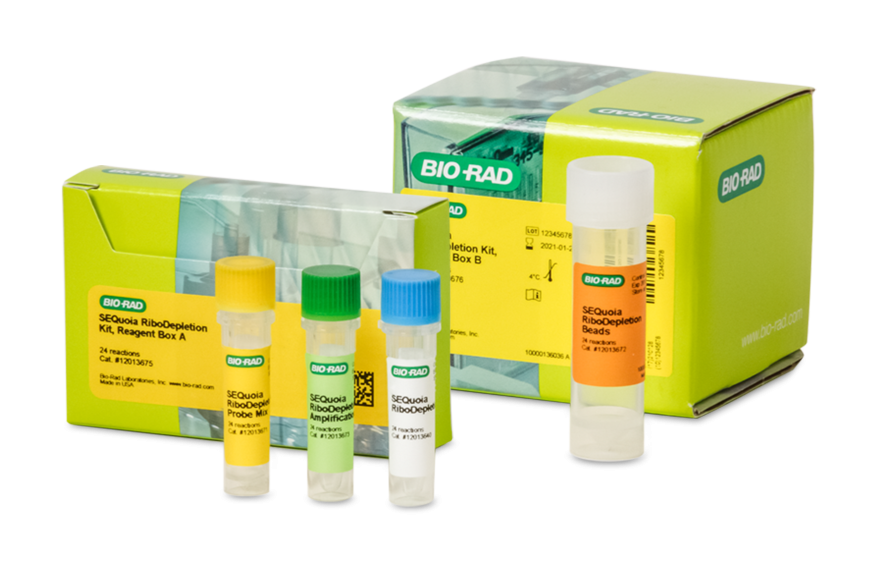
Overview
Frequently Asked Questions
Learn more about how to use the SEQuoia RiboDepletion Kit.
SEQuoia RiboDepletion Kit is a stand-alone, post-library depletion kit that eliminate fragments derived from cytoplasmic ribosomal RNA (rRNA) and mitochondrial ribosomal RNA (mt rRNA) sequences from an RNA-Seq library. The ribosomal RNA is abundant, constituting 80–90% of total RNA. Efficient removal of rRNA is critical to enable cost-effective sequencing of RNA samples.
Depletion of rRNA from total RNA before library construction can result in the loss of rare or low-abundance transcripts. SEQuoia RiboDepletion Kit depletes cDNA library fragments that were derived from rRNA post-library preparation, exhibiting superior performance in profiling the whole transcriptome, retaining and capturing small RNAs while minimizing the loss of rare transcripts and RNA from limited or degraded samples. This stand-alone ribodepletion kit is optimized to work with a broad input range (0.1–20 ng of RNA-Seq library) and is compatible with most available library prep kits. With the innovative post-library depletion technology, multiple pre-indexed libraries can be pooled and depleted in a single reaction, maximizing the depletion efficiency and saving significant time and cost.
The streamline workflow can be finished within 2 hours.
A Novel Technology for Post-Library Depletion Strategy
Features and Benefits
- Effectively eliminate ribosomal and mitochondrial RNA fragments from an RNA-Seq library
- Retain rare transcripts commonly lost from pre-library RNA depletion strategy
- Pool barcoded libraries into one depletion reaction to save time and money
Included Components
Each kit comes with two reagent boxes. Box A includes reagents for cDNA hybridization, depletion and amplification; store at
–20ºC. Box B includes purification beads; store at 4ºC.
SEQuoia RiboDepletion Kit FAQs
SEQuoia RiboDepletion Kit Technology
SEQuia RiboDepletion Kit Compatibility
SEQuoia RiboDepletion Kit Usage
Data Analysis
Specifications
Ordering
items
Use the filters below to refine results!

Accessories

Pkg of 20, bag of 12 x 8 thin-wall polypropylene tube strips and 12 x 8-cap strips for PCR, natural (1,920 tubes and 1,920 caps)



